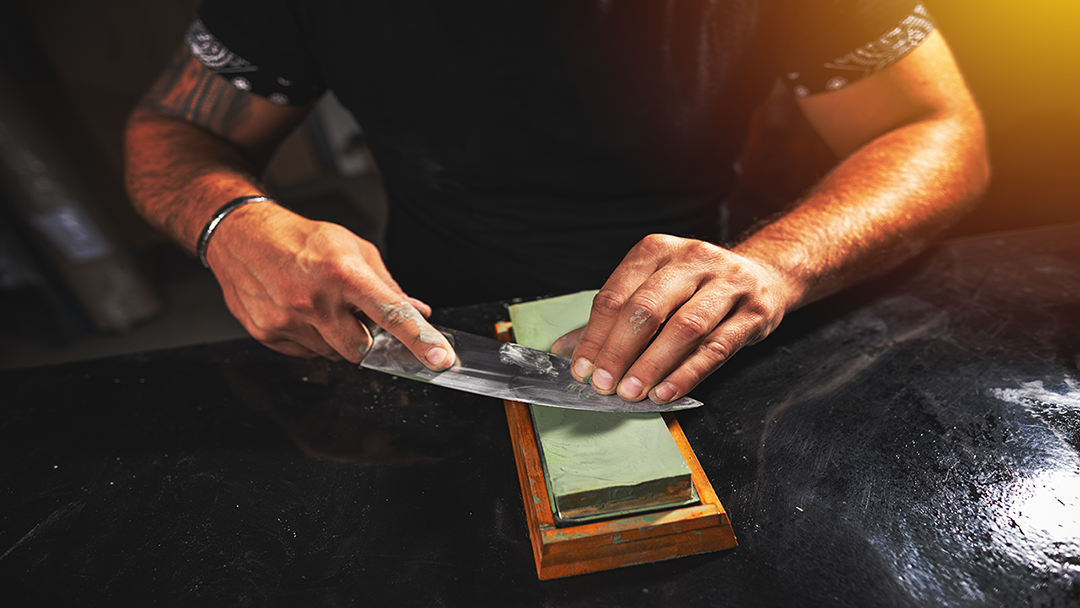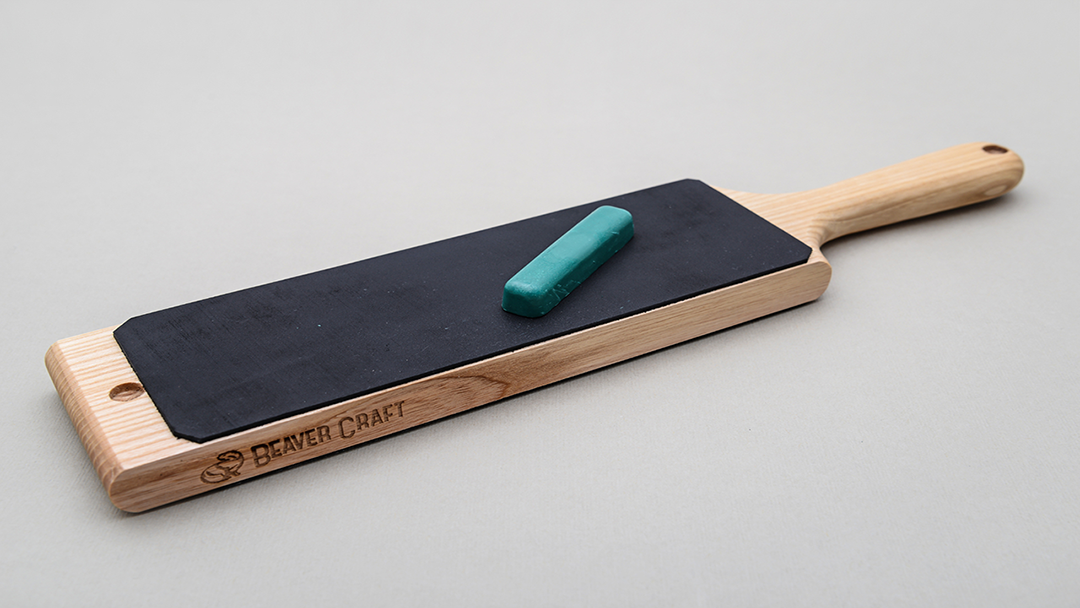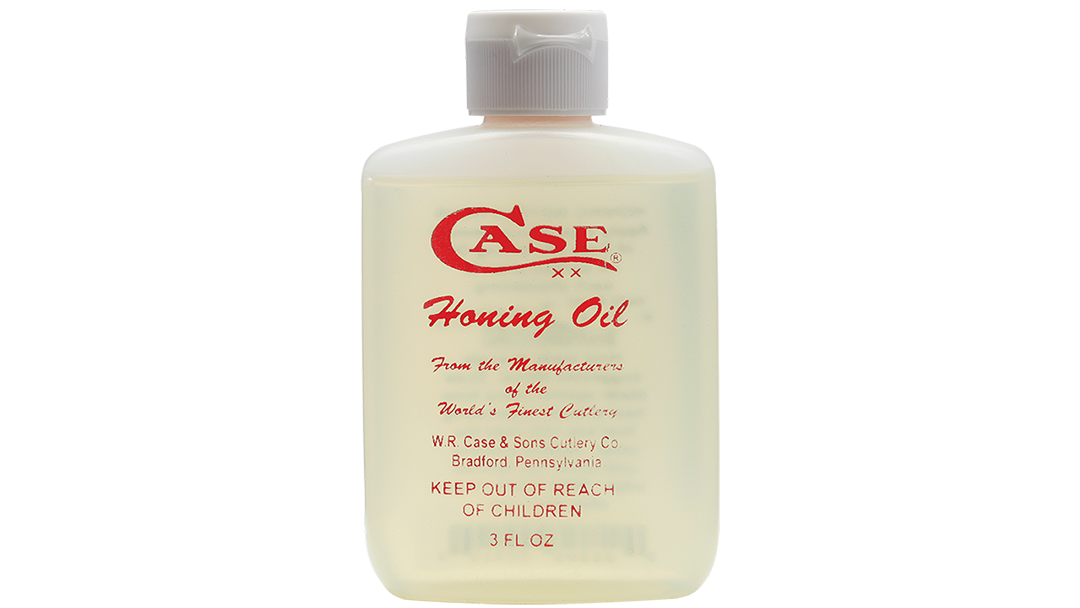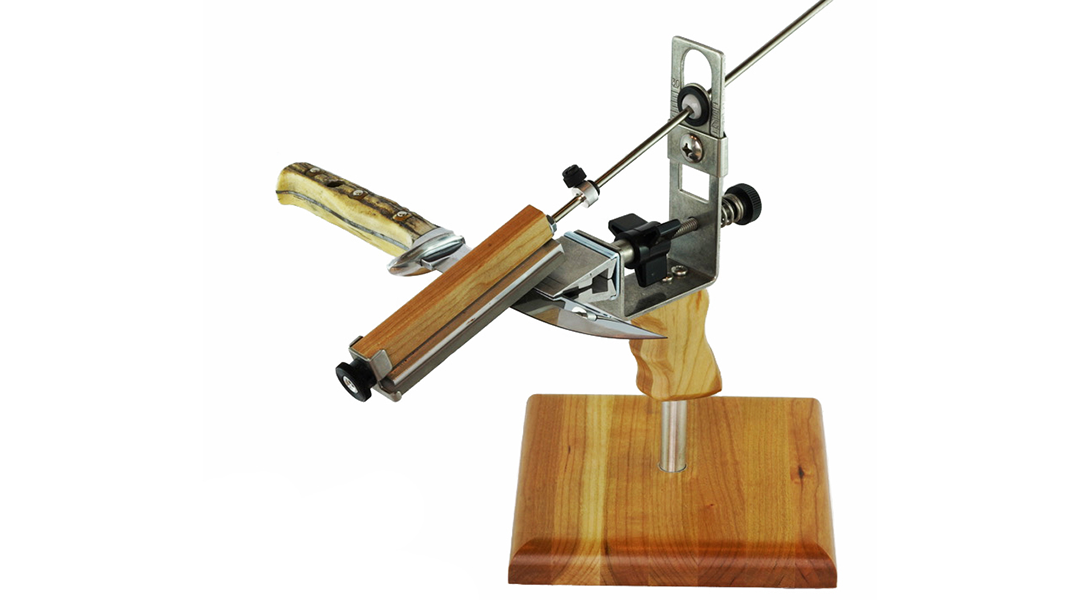Blog #1 - Beginner Guide to Knife Sharpening Equipment and Techniques
Author: Knife Supplies Australia Date Posted:6 April 2023

Keeping Your Knives Sharp Is Important!
A sharp knife is essential for both safety and efficiency. Knife sharpening can even be fun, and for some people it is a hobby within itself! To help you maintain the edge on your knives, we've put together this comprehensive guide on knife sharpening techniques, aimed for beginners. Whether you're a knife collector, hobbyist, or a professional who uses their knives all day, every day, this guide will help you learn about the different types of equipment and methods to sharpen your knives. Let's dive into the world of knife sharpening!
Knife Sharpening Equipment
Sharpening Stones and Stone Types
There are various types of sharpening stones available, each with disadvantages. Here are the most common types:
- Water Stones: Made of synthetic or natural materials, water stones are soaked in water before use. They offer fast sharpening and are available in various grits. Top brands like Pride Abrasive and Blade Elite offer high-quality water stones.
- Oil Stones: Made from materials such as Novaculite, Aluminum Oxide, or Silicon Carbide, oil stones use oil as a lubricant. Brands like Lansky have excellent oil stones in their lineup.
- Diamond Stones: Featuring a metal plate coated with diamond particles, diamond stones like those from Eze-Lap and Lansky offer quick sharpening and long-lasting durability.
- Ceramic Stones: Made of ceramic material, these stones are excellent for fine honing and polishing. Spyderco are a well-known brand for high-quality ceramic stones.
- Arkansas Stones: These natural stones, traditionally sourced from the US state of Arkansas, are excellent for honing and polishing, with fine grits that can produce razor-sharp edges.
Strops, Pastes, and Compounds
Stropping is the process of polishing a knife's edge after sharpening to remove any remaining burrs and refine the edge. Strops can be made from leather, like those from BeaverCraft and Brommeland Gunleather, or other materials such as balsa wood or linen. Apply stropping pastes and compounds, like those from Herold Solingen, to strops to enhance their polishing capabilities.
Honing Oils
Honing oils are essential for maintaining oil stones and protecting knives from rust. High-quality honing oils, like those from Lansky and Case, help suspend metal particles during sharpening and reduce friction.
Sharpening Systems
Knife sharpening systems are an excellent option for beginners or those who prefer quick, consistent and accurate results. These systems maintain the correct sharpening angle, which is crucial for achieving precise results. Typically, these systems offer multiple sharpening surfaces or stones with varying grits, allowing you to start with a coarser grit for dull blades and progress to finer grits for honing and polishing.
Guided sharpening systems like those from KME Sharpeners, and Lansky are designed to accommodate various knife types and sizes. They typically have adjustable angle guides to ensure that you can sharpen your knives at the right angle, depending on the type of blade you are sharpening.
The KnifeMate system is unique from other guided systems in that it does not used guided rods to control the angle. Instead, the angle is infinitely variable (between the minimum and maximum) as it is adjusted on a threaded rod and secured with a locking nut. Most guided sharpening systems require proprietary sharpening stones to function, but the KnifeMate system is designed to be used with any brand or size of benchstones!
Guided knife sharpening systems offer a convenient and effective way to sharpen your knives. They make the process more precise, more controlled, and less intimidating.
Knife Sharpening Methods
Now that you're familiar with the different types of equipment, let's explore some popular knife sharpening methods!
Freehand Sharpening
Freehand sharpening involves holding the knife at the desired angle and running it across the stone without any guided assistance. This method requires practice and a steady hand but can be highly effective once mastered. Here's a step-by-step guide:
- Choose an appropriate grit stone for your knife's condition (coarser for dull blades, finer for honing and polishing).
- Wet the stone (water stones) or apply oil (oil stones) to lubricate the surface.
- Hold the knife at the correct angle (typically 15-20 degrees) and swipe it across the stone in a sweeping motion, edge-leading.
- Repeat the process on both sides of the knife until you achieve the desired sharpness.
- Finish by stropping the knife to remove any burrs and polish the edge.
For beginners or those who prefer consistent results, guided sharpening systems are an excellent option. They simplify the sharpening process by maintaining the correct angle throughout. Here's how to use a guided system:
- Select the appropriate grit stone for your knife and secure it in the system.
- Adjust the angle guides according to your knife's requirements (check the manufacturer's recommendations).
- Place the knife in the system's clamp and begin sharpening by following the guided strokes.
- Switch to progressively finer stones as needed to refine the edge.
- Finish with stropping to polish the edge and remove any burrs.
Pull-Through Sharpeners
Pull-through sharpeners, such as those offered by Accusharp, provide a quick, convenient, and easy way to sharpen knives. They feature pre-set angles and require minimal skill to use. Simply pull the knife through the sharpening slot several times, and the device will do the rest. Note that these should generally be used on cheaper, lower-grade knives, and are mainly used as regular maintenance to keep an edge sharp. They are not effective at sharpening very dull blades or reprofiling and edge. The pre-set angles could even cause damage to an edge if the existing angle differs significantly from the one being created by the sharpening device.
Specialty Sharpening Tools
Some sharpening tools are designed specifically for certain types of knives or tools. For example, Flexcut and BeaverCraft have strops and compounds for wood carving knives (although we think they’re great for most types of knives and are great value for money!)
Conclusion
With a variety of sharpening equipment and methods available, maintaining a sharp edge on your knives is easier than ever. It can be quite a technical topic, especially once you get into the more advanced techniques and equipment. Remember, practice makes perfect, so keep honing your sharpening skills and enjoy the benefits and safety of sharp knives!






.png)





